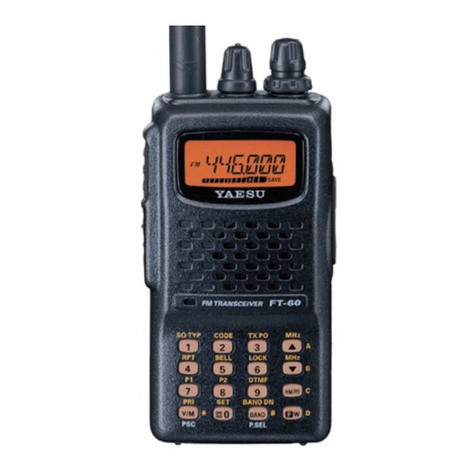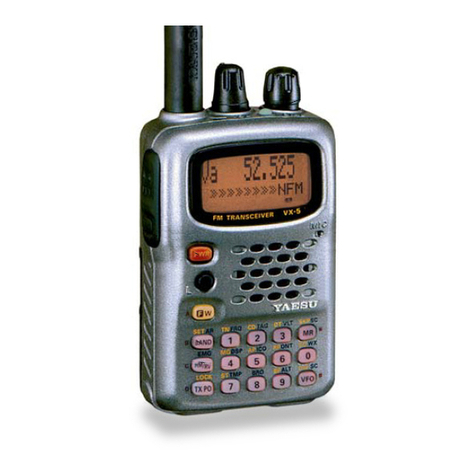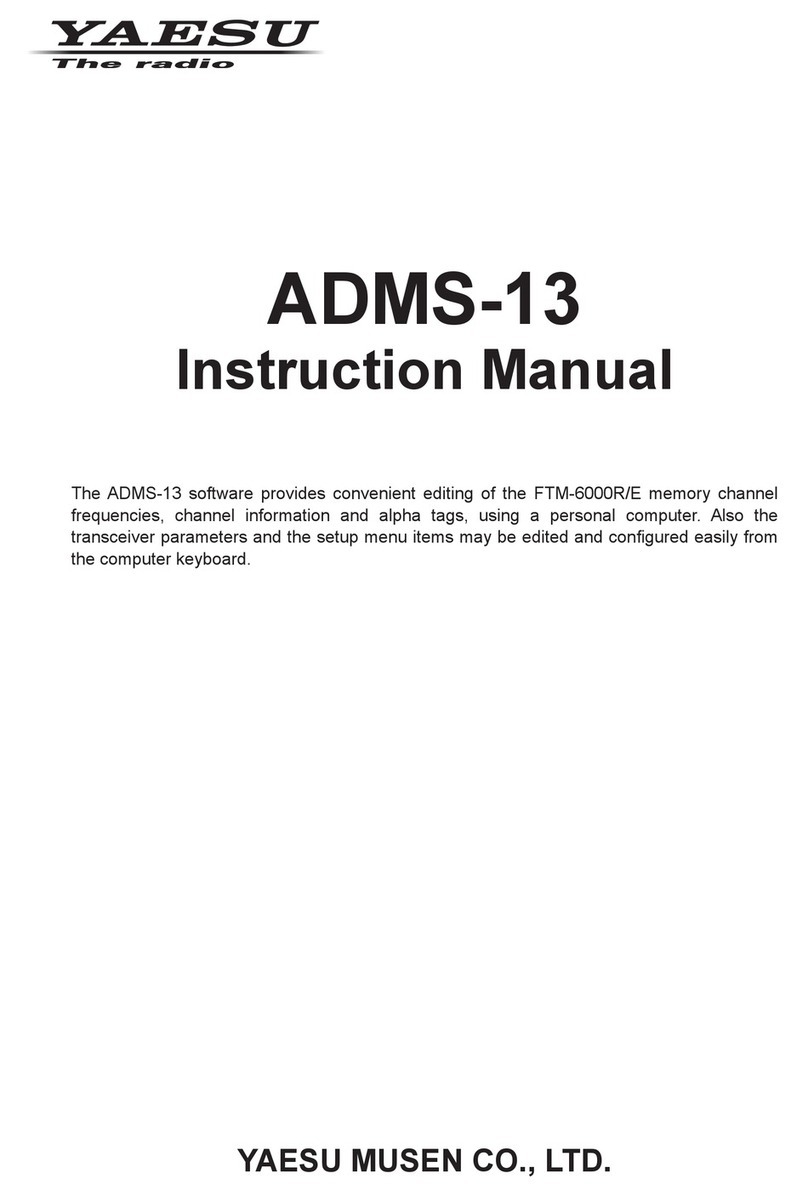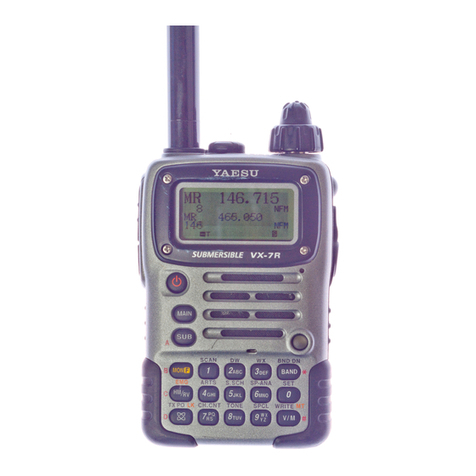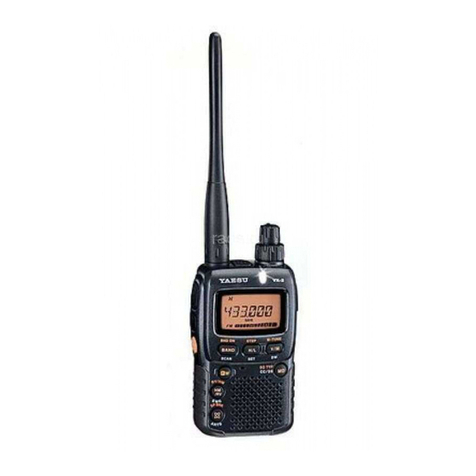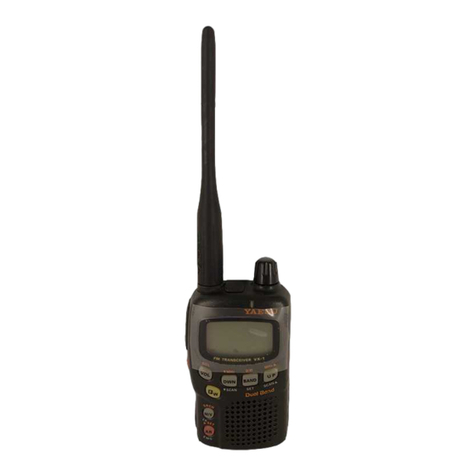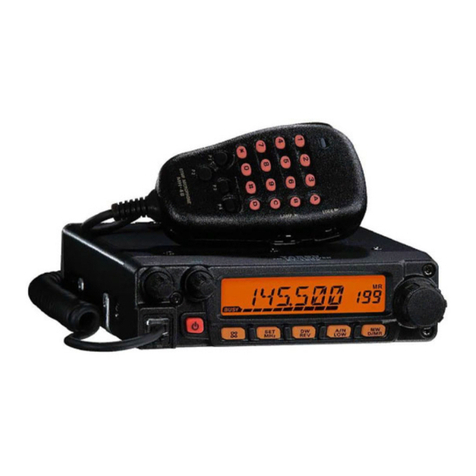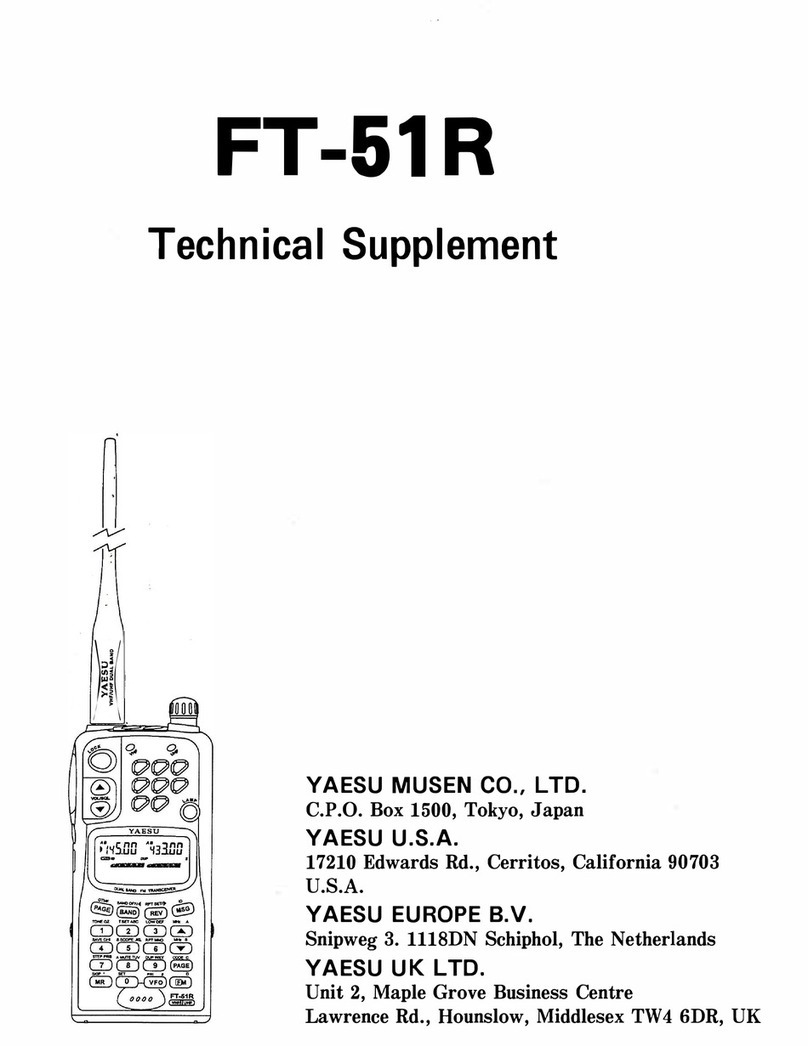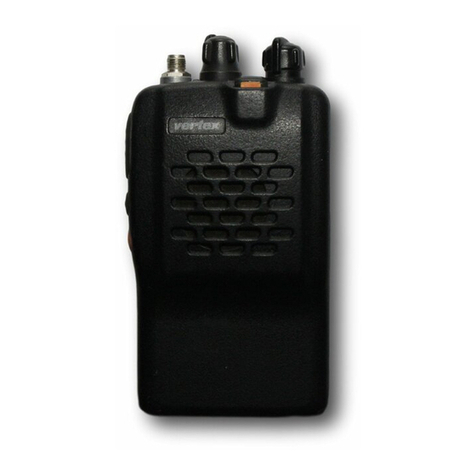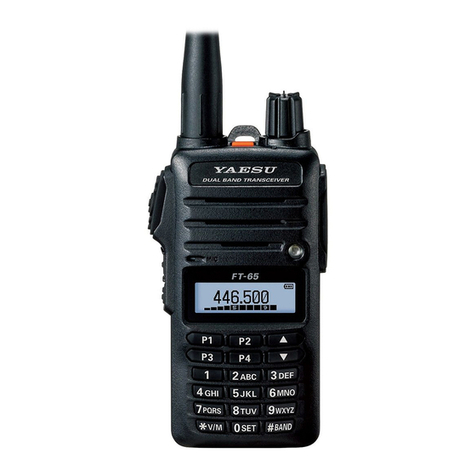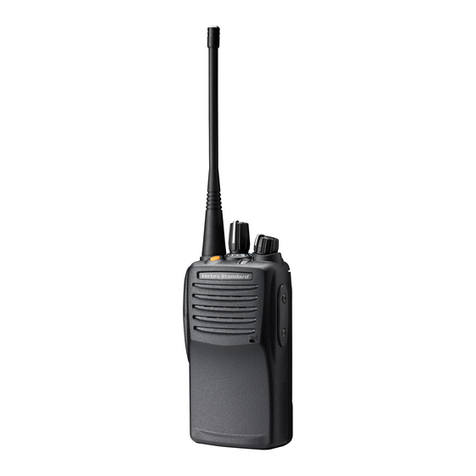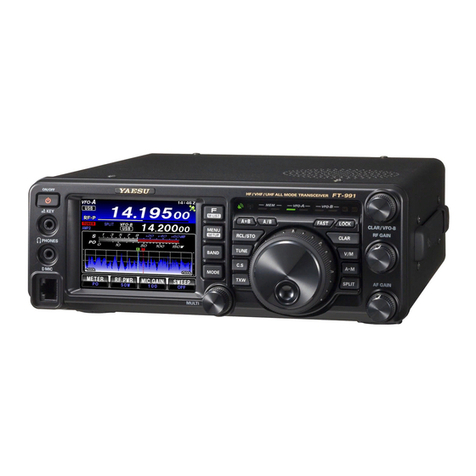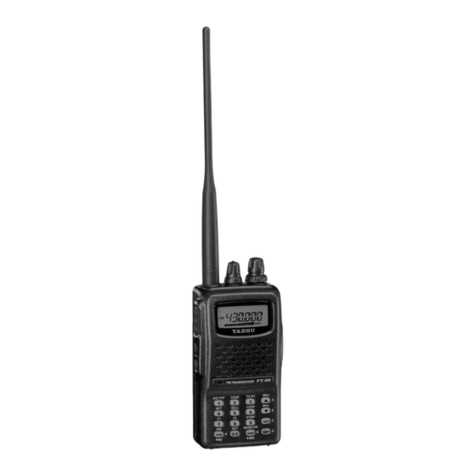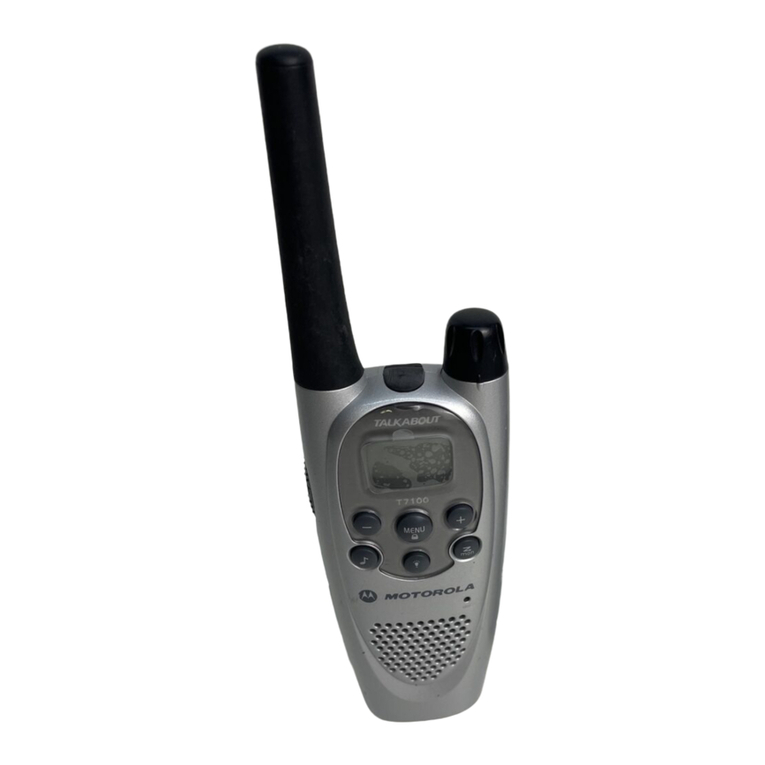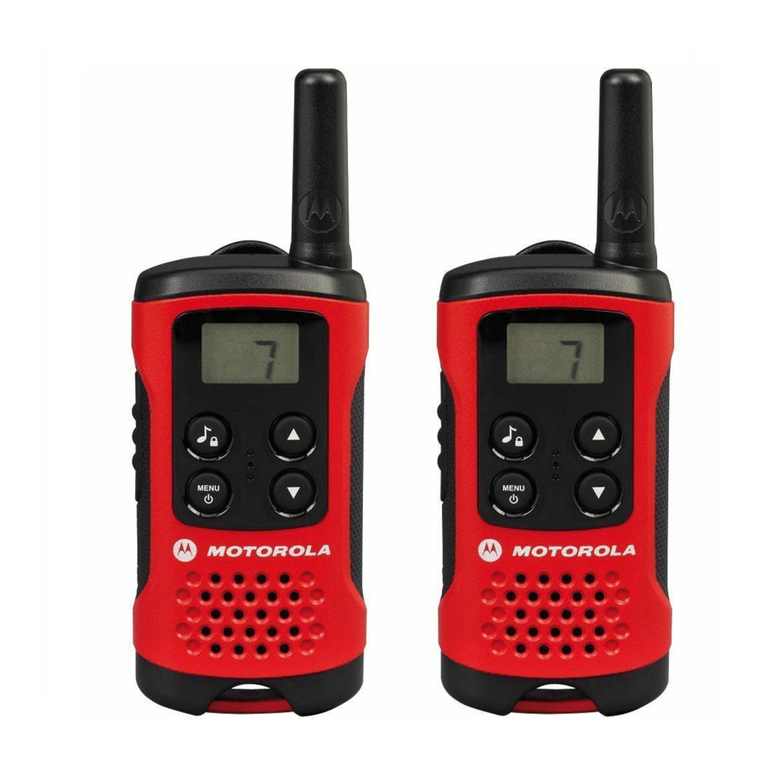
ALIGNMENT-1
Alignment
Introduction and Precautions
The following procedures cover adjustments that are
not normally required once the transceiver has left
the factory. However, if a problem occurs during
normal operation due to component failure; realign-
ment may be required after the faulty components
have been replaced.
We recommend that authorized Vertex Standard
Technicians, who are experienced with the circuitry
and fully equipped to repair and align our products,
perform repairs. If a fault is suspected, contact the
selling dealer for instructions regarding repair. Au-
thorized Vertex Standard Technicians have the lat-
est information to align all circuits and make com-
plete performance checks to ensure compliance with
factory specifications after repairs.
Those who undertake the following alignments are
cautioned to proceed at their own risk. Problems
caused by unauthorized attempts at realignment are
not covered by the warranty policy.
Vertex Standard must reserve the right to change
circuits and alignment procedures in the interest of
improved performance, without notifying owners.
Under no circumstances should any alignment be
attempted unless the normal functions and opera-
tion of the transceiver are clearly understood, the
cause of the malfunction has been clearly identified
and all faulty components replaced. The need for
realignment should be determined to be necessary.
The following test equipment (and a thorough fa-
miliarity with its correct use) is necessary for correct
alignment. Most steps do not require all of the equip-
ment listed. The interactions of some adjustments
may require that several adjustments be performed
in a sequence. Do not attempt to perform only a sin-
gle step unless it is clearly isolated electrically from
all other steps. Have all test equipment ready before
beginning, and follow all of the steps in a section in
the order they are presented.
Required Test Equipment
RF Signal Generator
AF Signal Generator
Spectrum Analyzer good to at least 1 GHz.
Frequency Counter
SINAD Meter
RF Millivoltmeter
Digital DC Voltmeter (high-Z, 1 M-Ohm/V)
DC Voltmeter
DC Ammeter (20 A)
Ohmmeter
50-Ohm Dummy Load (100 watts)
16.6-Ohm Dummy Load (100 watts)
In-Line Wattmeter (100 watts, 50-Ohm)
Linear Detector
RF Coupler
4-Ohm AF Dummy Load (3 watts)
Alignment Preparation & Precautions
A 50-ohm RF Dummy load and in-line wattmeter
must be connected to the "ANT" jack in all proce-
dures that call for transmission, except where speci-
fied otherwise. Correct alignment is not possible with
an antenna.
After completing one step, read the following step
to determine whether the same test equipment will
be required. If not, remove the unneeded test equip-
ment before proceeding (except the dummy load and
wattmeter).
Correct alignment requires that the ambient temper-
ature be maintained constant between 68 °F ~ 86 °F
(20 °C ~ 30 °C). When the transceiver is brought into
the shop from a hot or cold environment, it should
be allowed time to come to room temperature be-
fore alignment. Also, the test equipment must be
thoroughly warmed up before beginning.
Whenever possible, alignments should be made with
oscillator shields and circuit boards firmly affixed in
place.
Note: Signal levels in dB referred to in this proce-
dure are based on 0 dBµ = 0.5 µV (closed cir-
cuit).
